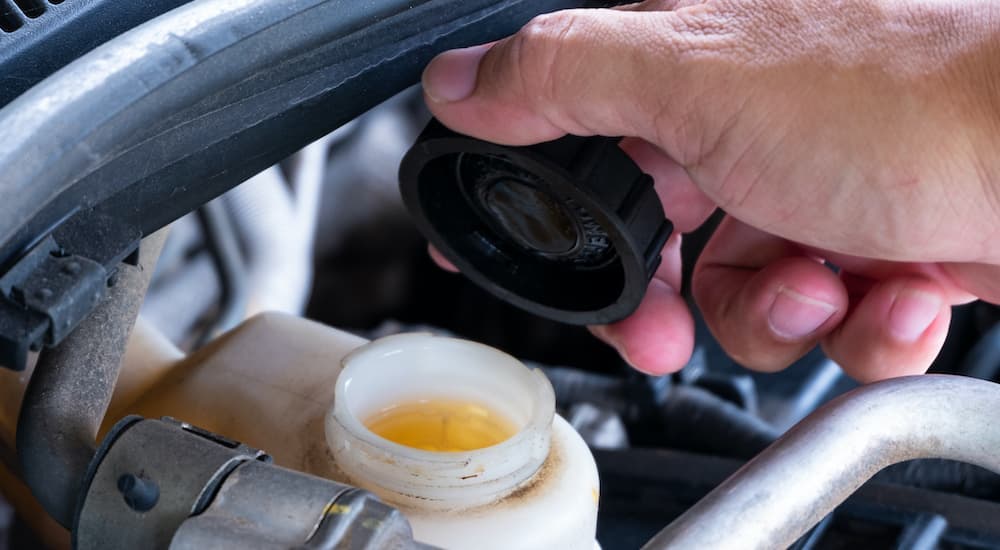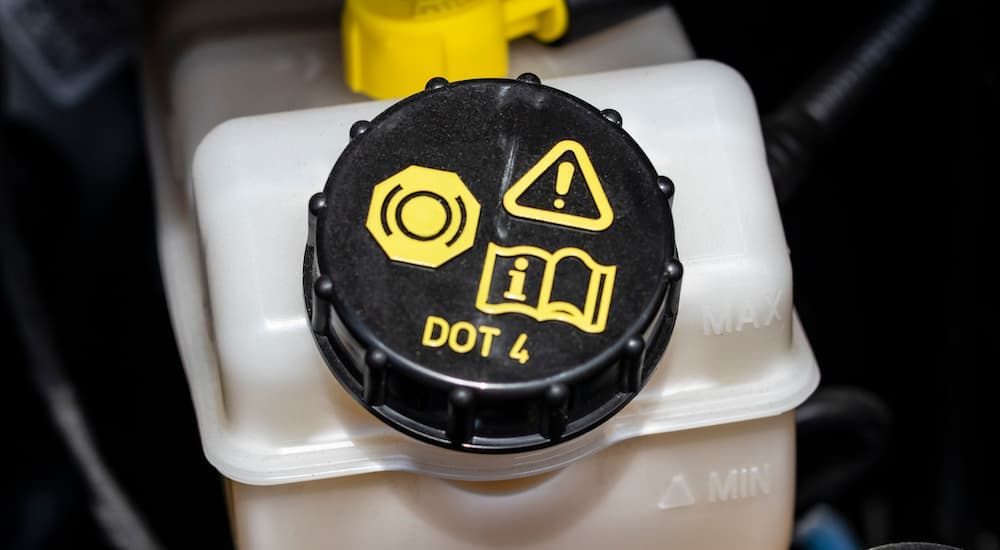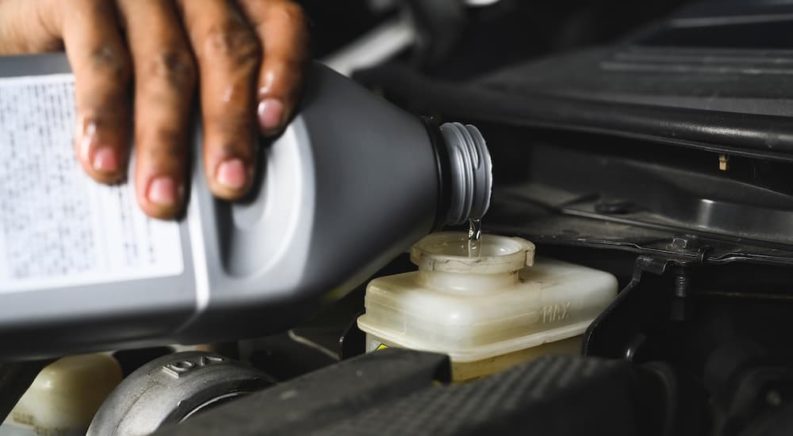Some motorists might think that brake fluid isn’t as important as oil and fuel, but it’s actually extremely important. The right kind of brake fluid can make all the difference when it comes to the stopping performance of your vehicle. Part of what may get some people hung up on the kind of brake fluid they should use is because it’s not necessarily about the brand but rather the DOT grade. If you’re unfamiliar with the DOT system and how brake fluids are categorized, this article will break down the categorizations and how they apply to your vehicle. This way, the next time you head into a tire shop to get new tires, new brake pads, and replace the brake fluid, you’ll have a better idea of what to look for and why.
Department of Transportation Brake Fluid Grades
In America, DOT is an acronym for Department of Transportation. For international ratings, they use ISO, short for International Standards Organization. These are the abbreviations for what’s used to classify different brake fluid grades. Obviously, those living and driving in America will be using the DOT system when replacing or refilling the brake fluid in their vehicle.
DOT grades go from DOT 2 up to DOT 5.1. In between, there is DOT 3, DOT 4, and DOT 5. The grades relate to the boiling point and composition of the different brake fluids. Before hydraulic fluids were used in vehicles for braking, drum brakes with cable wire and brake shoes were the standard. In the early days of hydraulic-based brakes, butanol, castor oil, and ethanol were all used up through the DOT 2 era of brake fluids.
Newer vehicles are typically designed to use DOT 3 or DOT 4 and sometimes DOT 5.1 brake fluid. You might be wondering why DOT 5 is rarely listed as a means of keeping your vehicle’s brakes tuned and functioning? Well, that’s because it has to do with how each DOT grade is classified based on the mixture and their purposes for different vehicles.

DOT Materials, Components, and Why They Matter
The different DOT grades of brake fluid relate to their temperature ratings and components. The higher the grade, the higher the boiling point of the fluid, which means the fluid is less likely to turn to steam and stop working from the heat generated under sustained hard braking. DOT 2 fluid, which isn’t used in modern vehicles, has a dry boiling point of 374 degrees Fahrenheit and a wet boiling point of 284 degrees Fahrenheit. Those may seem like pretty high numbers, but they are significantly lower than the more modern brake fluids.
While the dry boiling point is the boiling point of brand-new brake fluid fresh from the bottle, the wet boiling point refers to old brake fluid that has absorbed moisture. This will happen over time with most brake fluids and is unavoidable. After the brake fluid becomes moist, it loses efficiency, and that’s when it’s time to replace it. In the case of DOT 2, unless you’re using hydraulic fluids in a low HP go-kart, it’s not wise to use any DOT 2 brake fluids in a modern vehicle.
- DOT 3 brake fluid is what’s typically used in most vehicles, with a dry boiling point of 401 degrees Fahrenheit and a wet boiling point of 284 degrees Fahrenheit. DOT 3 brake fluids typically consist of ethylene glycol, which is hygroscopic, meaning it absorbs moisture. However, the more moisture it absorbs, the less efficient it becomes over time due to not being able to maintain its dry boiling point temperature.
- DOT 4 is composed of a different grade of glycol ether and/or borate ester, offering more resistance to higher temperatures. Its dry boiling point is above 446 degrees Fahrenheit, and it has a wet boiling point of 311 degrees Fahrenheit. This means that DOT 4 can withstand harder braking than DOT 3 compounds, and it is commonly found in larger or more performance-oriented vehicles.
- DOT 5 is a silicone-based brake fluid grade that can withstand temperatures of 500 degrees Fahrenheit, with a wet boiling point of 356 degrees Fahrenheit. DOT 5’s silicone compounds do not absorb moisture, and it does not damage paint like other brake fluids; these properties mean it is often used in classic cars that are stored for long periods.
- DOT 5.1 is actually based on glycol esters like DOT 3 and DOT 4 brake fluids. However, it’s very similar to DOT 5 in terms of boiling points. DOT 5.1 has a dry boiling point of 500 degrees Fahrenheit and a wet boiling point of 356 degrees Fahrenheit. This makes DOT 5.1 the “best” brake fluid, but it is generally overkill for daily driving.
Which Brake Fluid Is Right for My Vehicle?
While DOT 5 might seem like the best of the bunch, this is not the sort of brake fluid you will want to pick up from the local tire shop for your vehicle if you have anti-lock brakes because DOT 5 silicone is not compatible with anti-lock braking systems. Why? Because it’s due to the intermittent pulsing nature of anti-lock brakes. This creates gaps in the way the silicone is delivered through the system, creating pocketed air bubbles that reduce the efficiency and reliability of the overall braking system. DOT 5 does have its place, but it’s typically not for regular road usage on production vehicles driven in America, especially if they have anti-lock brake systems.
Most vehicle service manuals will also suggest what kind of grade of brake fluid to use, and it will occasionally be written on the brake fluid reservoir cap as well. Basic road vehicles will get by with DOT 3 or maybe DOT 4 brake fluid. Typically if the vehicle requires more aggressive braking because it has a powerful engine or has to slow down a lot of weight, then DOT 4 brake fluid will be required. At the top end of the spectrum for high-performance production vehicles, you might need DOT 5.1 brake fluid for the vehicle.
If you have a vehicle where you’ve hit up the tire shop for high-performance tires to match a high-end turbocharged engine or V8, and you need a lot of instant braking power, then you’ll need high-performance brake fluid. Why? Because the more aggressive you brake with a vehicle, the more heat the calipers, rotors, and pads generate. The hotter the brakes get, the more that heat transfers to the brake fluid, and if the fluid grade isn’t high enough, you run the risk of it exceeding its boiling point and evaporating. When the brake fluid evaporates, your brakes will no longer work.

Find the Right Brake Fluid by Boiling Point
Most brake fluids have the grade and boiling points on the packaging. This will give you an idea of what kind of temperatures they can withstand. When it’s time to replace the brake fluid, it’s best to fully drain the old fluid to make sure that the fresh new fluid can completely fill the system. This is particularly crucial when you are changing types of brake fluids, even though it is technically possible to mix DOT 3, DOT 4, and DOT 5.1.
However, it’s advised not to mix the fluids because you run the risk of compromising the higher grade brake fluid if it’s mixed with lower grade brake fluid. You especially cannot mix any other grade of brake fluid with DOT 5 brake fluid, or you run the risk of completely ruining the entire brake system. Performing a proper flush and replacing the brake fluid on the appointed service schedule, as indicated in the vehicle’s user manual, is always the best way to replace brake fluid unless otherwise instructed.

